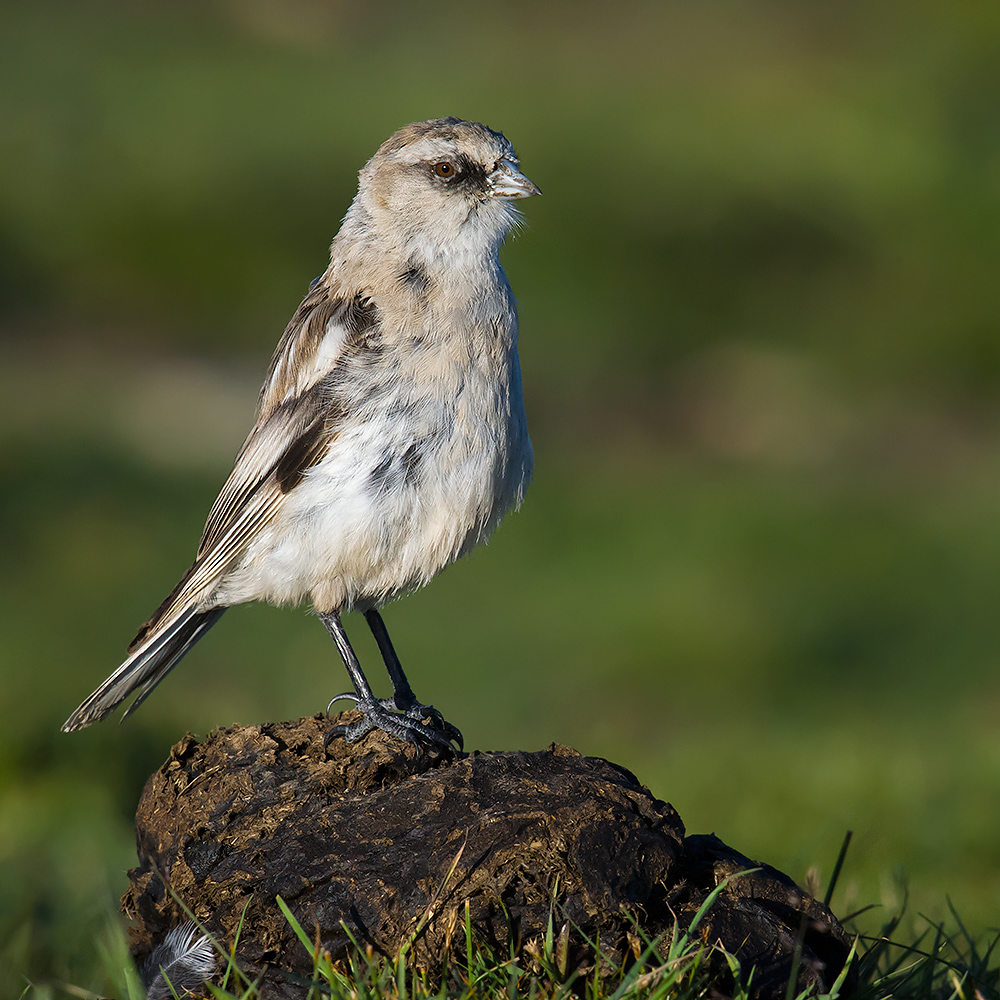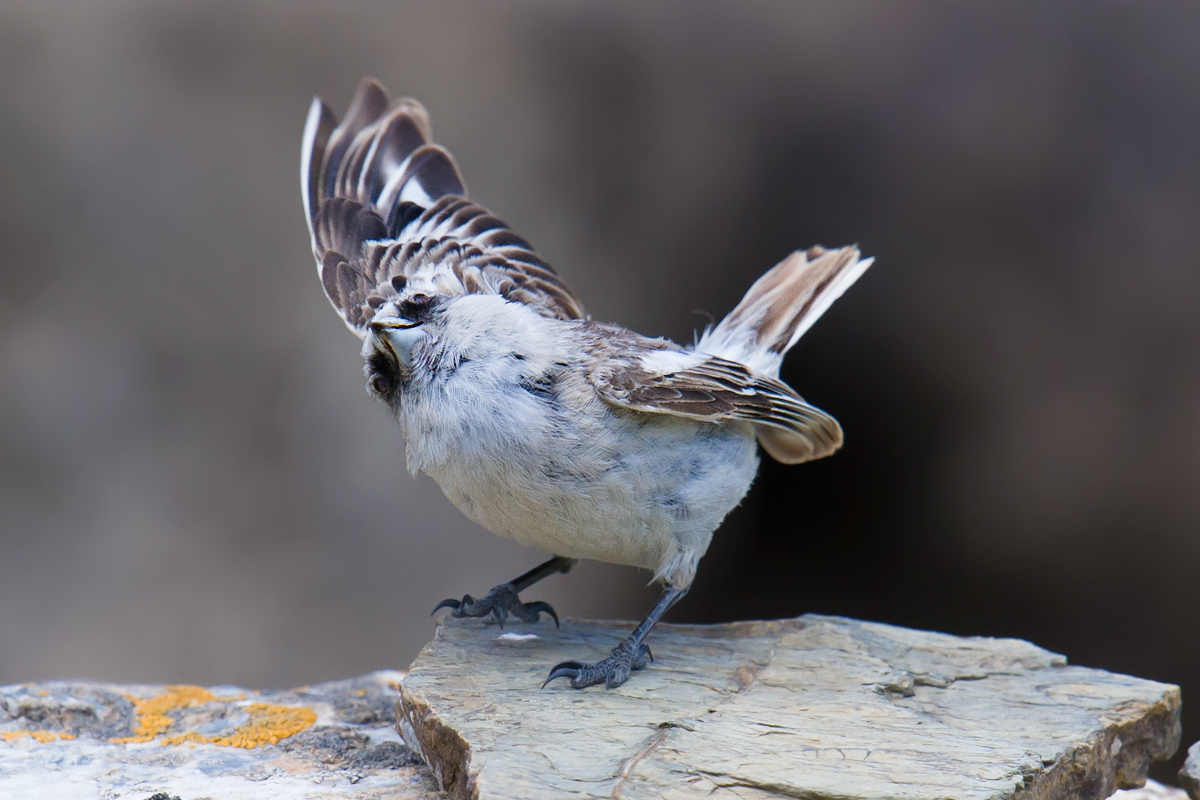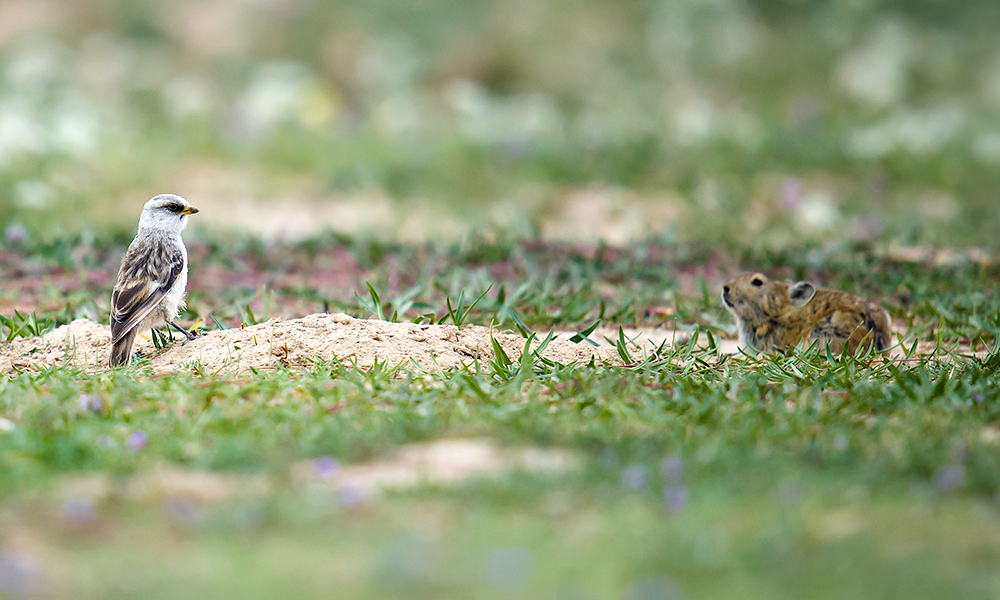


White-rumped Snowfinch Onychostruthus taczanowskii occurs in Tibet and Qinghai to southwest Gansu and northwest Sichuan. HABITAT & BEHAVIOR Breeds around pika colonies (in whose burrows it nests and roosts) on stony alpine steppe and mountainsides, often near the edges of bogs, to 5100 m (16,730 ft.). In winter descends to 3500 m (11,480 ft.), when often around farms and villages. Runs and digs well. Has lark-like display flight; bows and bobs tail on landing. ID Combination of paleness, heavily mottled or streaked mantle, back and scapulars, and plain white rump distinguishes from other snowfinches; rump particularly noticeable in flight. Has greyish-white forehead and supercilium, and broad black lores and narrow black eyeline. Grey-brown mantle, back and scapulars are heavily streaked or mottled blackish, in contrast with paler grey (almost unstreaked) nape and sides of neck; grey-brown crown slightly streaked dark grey. Flight feathers and wing coverts brownish-black with broad white panel at base of flight feathers, narrow white tips to secondaries, and white tips to tertials, median and greater coverts. Tail long, brownish-black, with white sides and broad white corners, the corners most conspicuous in flight. Underparts greyish-white, slightly darker across breast. Juvenile more buff on upperparts, wings and tail. BARE PARTS Bill horn or yellow with black tip; feet black; iris dark brown. VOICE Weak, wheezy song reminiscent of European Goldfinch. — Craig Brelsford
THE OLD WORLD SPARROWS OF CHINA
shanghaibirding.com has research on most of the 13 species in the family Passeridae in China. Click any link:
Rock Sparrow Petronia petronia
White-rumped Snowfinch Onychostruthus taczanowskii
Tibetan Snowfinch Montifringilla henrici
White-winged Snowfinch M. nivalis
Black-winged Snowfinch M. adamsi
Rufous-necked Snowfinch Pyrgilauda ruficollis
Pere David’s Snowfinch P. davidiana
Blanford’s Snowfinch P. blanfordi
Russet Sparrow Passer cinnamomeus
Eurasian Tree Sparrow P. montanus
Saxaul Sparrow P. ammodendri
Spanish Sparrow P. hispaniolensis
House Sparrow P. domesticus
ACKNOWLEDGEMENTS
Daniel Bengtsson served as chief ornithological consultant for Craig Brelsford’s Photographic Field Guide to the Birds of China, from which this species description is drawn.
